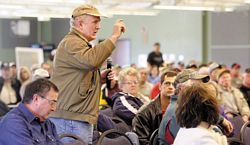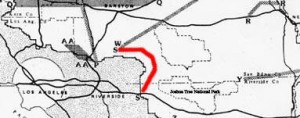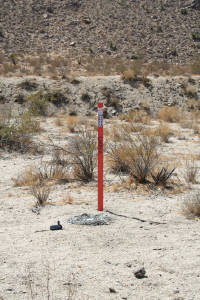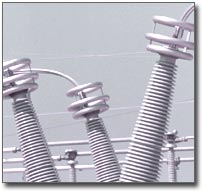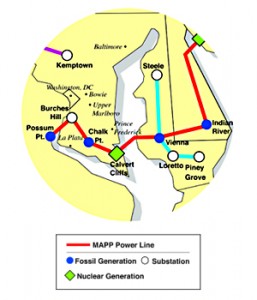Art Hughes has died…
March 31st, 2009
I’ve just received a missive from Iowa that Art Hughes, Ph.D. in Power Engineering, died last month, February 17, 2009.
Bernard A. Hughes
He was born on April 3, 1945, in Hereford, United Kingdom, son of James R. and Sara (Price) Hughes.
Art died just a few days after this photo was taken. He was making comments at a public meeting about an ITC transmission line through his Peosta, Iowa neighborhood:
Hearing generates electricity
Dubuque County landowners express concern about ITC transmission line
By MICHAEL SCHMIDT TH staff writerPEOSTA, Iowa — Jack Ludescher has second thoughts about his retirement home.
During the question-and-answer session, property owners voiced their concerns about the project.
Doug Behnke, of Peosta, questioned how energy from the transmission line would be neutralized.
Behnke scoffed at ITC’s graphic, calling it “distortion.”
Comments – FERC docket on Green Power Express
February 28th, 2009
A little birdie told me that the Comment period on the Green Power Express rate docket at FERC has been extended to March 6, a week from now.
To find the FERC docket (maybe there’s a quicker way, but this is all I know so far…), CLICK HERE and search for docket ER09-681.
The filing is just too big to upload, but you can see the redacted version here:
What they’re wanting to do is stick their Construction Work In Progress (CWIP) into the rate base… they want to be able to charge us for this, for putting this together!?!?! “Who” is the rate base in this, what are the costs, at what point could they be assessed?
I’m struggling to wrap my pea brain around this, but I’m wondering what the difference is between this and what Xcel got in the 2005 Transmission Omnibus Bill from Hell, other than a much wider rate base:
The rate base that ITC Holdings could spread this over is immense, as opposed to Minnesota’s utilities’ rate base, and the idea of paying for development of this phenomenally stupid idea just galls me… but I’ve got some reading and thinking to do here. Intervenors are lining up to weigh in and fight about it.
And then there’s that 7,000MW of wind in the MISO queue in Illinois, and it’s the Chicago transfer numbers they want to keep secret. Shouldn’t someone tell them that there’s all that wind in Illinois?
I’m printing out this sucker for a winter night’s read…
Check it out — what do you think?
LA billboard: NO TRANSMISSION LINE!
February 18th, 2009
I-10 billboard criticizes LA proposal to run electrical lines through Inland areas
By JANET ZIMMERMAN
The Press-EnterpriseThe billboard reads: “L.A. Mayor Antonio Villaraigosa, It’s not yours to destroy!”
Check out the site for the:
And here’s the map of LA’s preferred corridor, and the wide line on the map is accurate as they’re planning a TWO to FIVE mile wide corridor! Really! TWO to FIVE miles!
Here’s another site — groups fighting this stupid “Green Path North” idea:
STOP Green Path North, LADWP and Imperial Irrigation District
JCSP & UMTDI in the news
February 16th, 2009
More transmission – again in the Wall Street Journal.
Hard to tell which of the alphabet soups this article is about, and I’d say both, it’s about the Joint Coordinated System Plan and the Upper Midwest Transmission Development Initiative — UMDTI! But we know it’s all one and the same.
The article doesn’t really specifically name either “group” and it leaves us wondering just who or what is behind it. This is a good thing — yes, it really is as amorphous as it sounds! What disturbs me, of course, is the “It’s for wind,” because we know better!
At least the WSJ noticed the NYISO and ISO-NE’s objections — here it is again, it’s one of those letters I just can’t get enough of:
The UMDTI is insidious, a cheerleading effort to push transmission through. The way the thing is structured, is, as I said in my comments at the February 11, 2009, meeting, is ABSOLUTELY ASS-BACKWARDS. It’s market driven backwards engineering a transmission solution to support nonexistent need.
Upper Midwest Transmission Development Initiative – HOME PAGE
UMTDI Stakeholder Letter 10-28-08
Stakeholder Responses – LINK – look who the stakeholders are – DUH!
Wind on the Wires Comments … sigh…
UMDTI Stakeholder Letter 12-31-08 (Ed Garvey – MISO)
Dec 30 Draft – Cost Allocation Work Group (Marya White – Commerce)
December 30 Draft – Transmission Planning Work Group (Randy Pilo – PSC-WI)
Wind on the Wires cites many studies:
MISO’s Regional Generation Outlet Study (RGOS)
Transmission planning initiatives by” CapX 2020, ATC, Mid-American and others”
Minnesota RES transmission study
MISO’s MTEP-08 and MTEP-09
Joint Coordinated System Planning Stuey
Eastern Wind Integration Transmission Study
None of these studies are linked — and they’re not on the UMTDI site — let’s see how long it takes to find them.
Now for the more difficult ones… one moment please…
Transmission – Mid-Atlantic Power Pathway
February 2nd, 2009
Delmarva Power has been hosting meetings about its proposed Mid-Atlantic Power Pathway. The next meeting is:
Wednesday, February 4 @ 6 p.m.
Millsboro Civic Center
322 Wilson Highway
This is an electrical superhighway through Delaware, the map makes that much clear.
What’s interesting is that Rep. Tom Carper seems to be taking an enlightened and informed position on this:
Today, there’s a long piece in the News Journal about it, with the above quote from Carper:
Power-line plan stirs environment fears
Bluewater Wind hails pathway for clean energy
